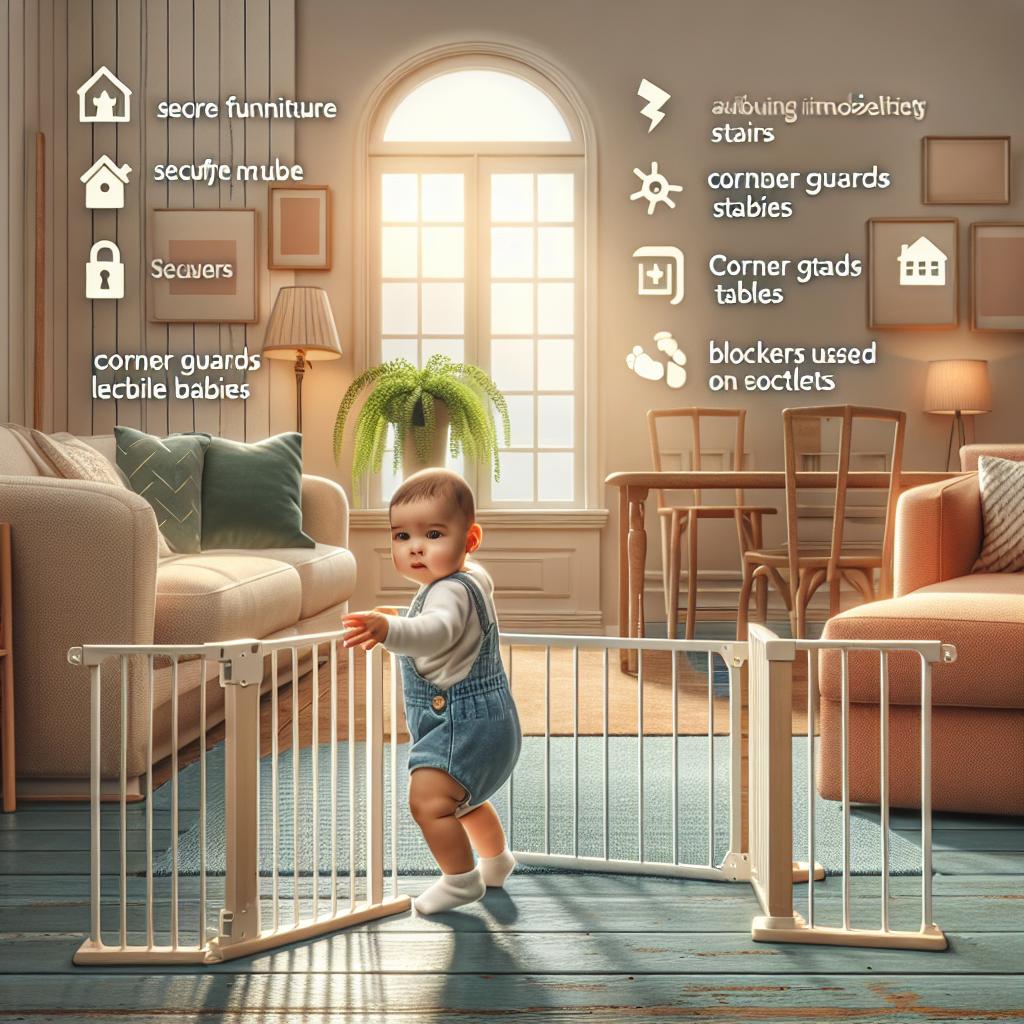Baby Fall Prevention Tips: Creating a Safe Environment
As our babies grow, they begin to explore the world around them. This stage brings joy and excitement, but it also brings new hazards, particularly the risk of a fall. Implementing some well-planned baby fall prevention tips can help ensure your little explorer’s safety.
Let’s dive into the essential steps of managing mobility and child-proofing your home to secure your baby’s environment.
Understanding the Risks and Taking Precautions
A mobile baby’s home environment is full of potential hazards that parents need to address. Understanding these risks is the first step towards prevention.
Research has shown that falls are one of the most common accidents among babies, often due to their exploring nature. They may climb onto furniture, teeter on edges, and dart around surprisingly fast. Therefore, parents and caregivers need to be proactive in implementing child safety measures.
Key Steps in Child-Proofing Your Home
When it comes it child-proofing your home, there are several areas to focus on:
- Stairs: Install baby gates at the top and bottom of all stairs. Babies love to crawl and explore, and stairs are a significant danger.
- Furniture: Anchor heavy furniture to the wall to prevent tipping. Babies may pull themselves up using tables, bookshelves, or televisions, which can cause these items to topple.
- Floors: Rid the floor of any small items to prevent choking hazards. Also, use non-slip mats under rugs to prevent slips and falls.
- Windows: Install window guards or safety nets to prevent accidents.
For more extensive baby-proofing steps, consider referring to this checklist.
Ensuring Safety: The Role of Supervision
While child-proofing is vital, supervision is equally important in ensuring safety. Babies are often unpredictable and swift, and even the highest level of baby-proofing cannot replace the need for careful supervision.
The Consumer Product Safety Commission advises that the most effective prevention strategy combines the vigilant supervision of children with the use of safety products.
Never leave your baby unattended on high surfaces such as beds, changing tables, or sofas, even for a moment. Also, keep a close watch on your child when they are exploring new areas.
You’ll find more insights on how to improve your baby’s safety at home in this article.
On the Move: Managing Mobility
The move of your child from crawling to walking can be both exciting and frightful. This substantially increases the space a child can cover and the speed at which they can reach potential hazards. Having a strategic plan, which includes providing the right tools and maintaining a close eye, will help manage the heightened movement.
Providing The Right Tools
Arming your little one with the right gear is crucial during their walking phase. Offering walking toys can help your child build strength and gain balance. However, ensure the toys are sturdy and won’t tip over when your child leans on them.
For crawling babies, invest in knee pads, especially for babies who crawl on hard surfaces. Knee pads provide a protective layer to your baby’s delicate knees and make crawling more comfortable.
The Importance of Supervised Playtime
In addition to child-proofing your home, supervised playtime can prevent accidents by allowing parents to intervene when children venture into potentially dangerous situations. This is especially important for mobile infants who are beginning to explore more extensively.
Here’s an excellent guide from ECLKC about how to keep mobile babies safe.
Supervised playtime also offers a chance for parents to model safe behaviors. By demonstrating cautious movement, parents can teach their children how to navigate their environment safely and to recognize potential hazards.
Consulting Health Professionals.
Regular medical check-ups can help identify any potential health conditions that could increase a child’s risk of falls or injuries. For instance, ear infections can affect a child’s balance, while vision problems can affect safety when they are on the move.
It is also important to ask for advice from health professionals about individualized fall prevention strategies. The Nurseslabs provides an excellent resource on fall risk assessment that’s worth reviewing.
Early Education
Teaching your child about safety from an early age can be another preventive measure. Simple instructions and demonstrations can help them understand dangers and avoid harmful situations. For example, showing them that they should sit while eating can prevent them from choking.
Visitors and Babysitters
While baby-proofing might make sense to you as a parent, guests and babysitters might not be familiar with the layout or the safety measures implemented in your home. Therefore, it’s necessary to guide them around your home, emphasizing the safety precautions in place.
This comprehensive ECLKC guide provides invaluable safety tips for visitors to ensure your baby’s safety.
Creating an Environment Where Your Baby Can Free safely
Mobility and exploration play a significant role in the physical and mental development of a child. By adopting these baby fall prevention tips and child-proofing your home, you can create a safe environment where your child can explore, learn, and grow.
All in all, being ahead of your baby, in terms of foreseeing possible hazards and prevention, is key in ensuring their safety, as well as your peace of mind.
For more detailed tips on preventing falls in the home, the National Institute on Aging has a comprehensive room-by-room guide that is useful for parents dealing with mobile infants.
